As sabre-rattling continues between Russia and NATO, Norway has been strengthening its northern defense but also engaging in joint Russian-Norwegian inspections of each other’s military hardware and personnel. The goal, according to the Norwegian military, is to build up confidence in one another, avoid misunderstandings and reduce tensions.
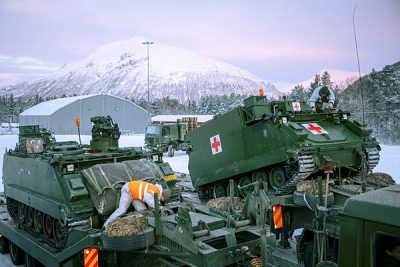
The tensions are at their highest point since the Soviet Union collapsed and Russia re-emerged with its own flag at the end of 1991. Russian President Vladimir Putin has chosen an unusual way to celebrate the “new” Russia’s 30th birthday: sending around 100,000 of the country’s troops along the Russian border to Ukraine and all but threatening war if the US and NATO don’t go along with a long list of demands.
Norwegian Foreign Minister Anniken Huitfeldt has since joined top NATO, US and EU officials in branding Putin’s demands as “completely unrealistic.” Among them: that Ukraine must never join NATO, that all NATO forces be withdrawn from member countries Poland, the Czech Republic, Latvia, Lithuania and Estonia, and that no military exercises be held near a border between Russia and another NATO country. That would directly affect Norway, along with several other of NATO’s now 30 member countries.
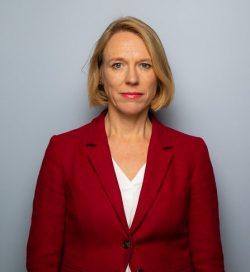
“It would be like turning the clock back to the situation before 1997,” Huitfeldt told Norwegian media, referring to the year when Russia and NATO agreed on the framework for post-Cold War cooperation between the NATO defense alliance and Russia. The agreement contains no ban on membership for countries once allied with the former Soviet Union.
Norway was among the founding members of NATO, which expanded greatly after the Berlin Wall fell and East- and West Germany reunited. With no NATO membership restrictions on former members of the Warsaw Pact (which was dominated by the Soviet Union and dissolved when the union did), Poland, Hungary and the Czech Republic joined NATO in 1999. Bulgaria, Romania, Slovakia and Slovenia followed in 2004, as did Estonia, Latvia and Lithuania.
Now Putin, years later, seems to be feeling threatened by all that, complaining at a carefully orchestrated press conference in Moscow last week that it means NATO has placed weapons “in our backyard.” Western-oriented Ukraine and Georgia have long wanted to join NATO too, but NATO has held off on admitting them.
New talks loom
Huitfeldt stresses that it’s up to each individual nation to decide whether they want to pursue NATO membership, and then up to NATO members to decide whether to include them. Putin chose to ignore that, opting for the Russian troop build-up and thus provoking NATO, the EU and the US, all of which have vowed that they’ll react strongly to any attack on Ukraine.
On Thursday came news that Putin requested a new telephone conversation with US President Joe Biden, who agreed to take Putin’s call on Thursday afternoon (nighttime in Europe). It will be their second direct contact this month, and follows news earlier this week that high-level Russian and US officials are also due to meet on January 10 to discuss the current stand-off. Representatives from Russia and NATO are then set to meet on January 12, followed by a meeting between Russia and the Organization for Security and Cooperation in Europe (OSCE) on January 13.
Putin ‘created a crisis’
Arne Bård Dalhaug, a retired Norwegian military officer who spent three years on the front line in Eastern Ukraine for OSCE, is convinced that Putin has simply “created a crisis” so that the Kremlin can in turn “offer a solution to the problems it generated and even be rewarded for that.”
Dalhaug wrote in a commentary published in newspaper Dagens Næringsliv (DN) that US and NATO should respond by demanding that Russia instead respect internationally accepted borders in accordance with international law and agreements, like the 1997 pact. That would mean Russia must end its occupation of Ukraine’s Crimean Peninsula along with parts of eastern Ukraine, and pull out of Transnistria in Moldova and Abkhasia and Southern Ossetia in Georgia.
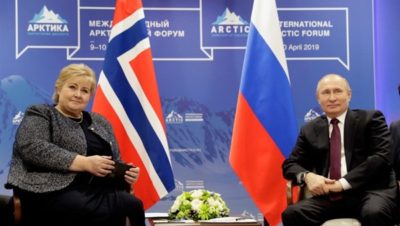
“It’s time to stop coddling Putin and view Russia’s leader as what he is: an authoritarian dictator who is the worst threat to peace and freedom in Europe today,” wrote Dalhaug. He added that “there is absolutely no reason to excuse Putin,” and that it’s also time to “hold him responsible for waging war against other European countries, illegal occupations and severe violations of human rights in Russia.”
Just this week, Putin also succeeded in his efforts to ban the Memorial organization that has documented Josef Stalin’s terror against Soviet citizens, his victims and the atrocities of his gulag system for political prisoners, along with the starvation of Ukrainians in the early 1930s. Foreign Minister Huitfeldt stated on Wednesday that she was “deeply worried” by the ban on Memorial, and she called on Russian authorities to “stop destroying civilian society” in Russia.
Putin’s attempt to ignore unflattering historical events comes just as his fellow dictator in China, Xi Jinping, also strives to ignore or even erase history by ordering removal of monuments in the once-free and thriving Hong Kong to the Chinese government’s massacre of demonstrators at Tiananmen Square in 1989. Putin and Xi had a meeting of their own two weeks ago, calling each other “old friend” and “dear friend” and sending a message that the former Sino-Soviet rivalry (which the West could use to its advantage) is over. Now the two men seem to support each other and their ambitions: Xi is constantly trying to intimidate Taiwan just as much as Putin tries to intimidate Ukraine. Putin invaded Crimea just weeks after hosting the Winter Olympics in 2014, raising eerie questions as to whether Xi is plotting a similar move after China’s own upcoming and controversial Winter Oympics in February.
Meanwhile, up north…
Amidst all the current high-level tensions with Putin, relations on a more local level in Norway’s and Russia’s northern areas still appear somewhat more friendly. In early December, Norwegian military officers visited a Russian motorized infantry brigade in Petsjenga outside Murmansk. Nine days later Russian officers visited Norway’s Northern Brigade in Troms. In both cases, the visitors received briefings, met with military personnel, inspected each other’s hardware and even sat down to eat and chat together.
The Norwegian defense department noted that both Norway and Russia are obliged to receive such delegations every year, in accordance with international agreements. The goal, reported defense officials, is to boost mutual confidence between cross-border neighbours, “avoid misunderstandings and reduce tensions.”
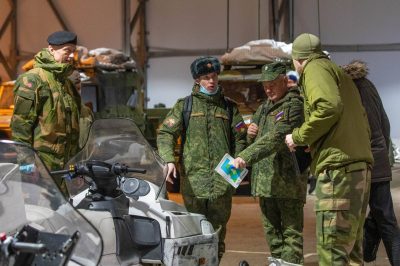
The mutual inspections come after Norway is in the midst of rebuilding much of the military presence in Troms and Finnmark that was greatly scaled down when the Cold War ended. More than NOK 1 billion is being invested in the Norwegian base at Porsanger, where a new battalion with tanks will be based and the Home Guard strengthened. Newspaper Klassekampen reported this week that several billion more are being invested in buildings, electronics, weapons, vehicles and technology at military facilities in Northern Norway. Two new military border control stations have been built farther to the east in Finnmark, to guard the Russian border. The garrison there in Sør-Varanger is also getting a new army calvary trained to move quickly and equipped to defend against any invasion.
“My main message is that now Finnmark can be defended,” Colonel Tomas Beck told Klassekampen. “We definitely have a potential military threat to the east. Our job is to make sure than a potential opponent sees that an attack will be costly and therefore opt against one.” Norwegian authorities are also concerned about a series of GPS jamming of domestic aircraft in Finnmark (70 since 2018) that Russian authorities will neither confirm nor deny being behind. There’s also been another recent failure of the mobile network in Sør-Varanger, raising the threat of hybrid attacks that have been warned by Norway’s national security experts.
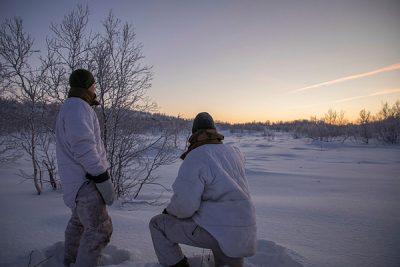
Military inspectors this month, meanwhile, could verify that the brigades and garrisons visited in Russia had the material they’d reported they have to the OSCE. “To see it for yourself and speak with military counterparts raises confidence that the information Russia has delivered is correct,” stated Major Leif Urke in a report published by the Norwegian military. “Verification of information is the core of our control efforts. Dialogue and transparency help stabilize relations between Russia and Norway.”
Newspaper Aftenposten editorialized just before the Christmas holidays that “it’s worth to try” more dialogue with Russia at the highest levels. Both the EU and NATO support the “legitimate government” of Ukraine and sanctions against Russia, as does Norway. Patience is wearing thin, however, as armed conflict between Ukraine and Russian-backed separatists in eastern Ukraine heads into its eighth year, and Putin places troops on its side of the border.
All involved (Russia, the US, the EU and NATO) need the looming diplomatic contact, editorialized Aftenposten, Norway’s biggest paper. “Does the current cold stand-off have to continue to reduce the risk of a new Russian offensive?” wrote Aftenposten. “Can NATO offer the Russians any concessions without letting down Ukraine or others? There are no simple answers, but it can’t hurt to talk.”
newsinenglish.no/Nina Berglund

